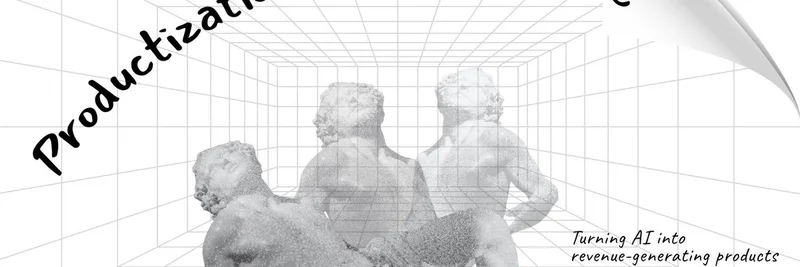In the fast-paced world of Web3, where innovation meets speculation, one tweet from @Defi0xJeff has sparked a conversation about the real hurdles in AI development. Posted on August 21, 2025, the tweet dives into the gritty reality of turning AI research into actual revenue, especially for decentralized AI (DeAI) teams. Let's break it down and explore what this means for the crypto space, including how it ties into the wild world of meme tokens.
The Core Message: R&D Doesn't Equal Revenue
Defi0xJeff kicks off with a stark truth: "$1 spent on AI R&D ≠ $1 in revenue." It's a reminder that pouring money into artificial intelligence research and development doesn't automatically translate to profits. In fact, revenue is tough to come by, and achieving profitability is even harder. He points out that even giants like OpenAI, boasting billions in annual recurring revenue (ARR), aren't cash flow positive yet. This means their operating expenses still outpace their income, despite massive investments and hype.
For those new to the term, cash flow positive refers to a business generating more money than it spends over a period, allowing it to sustain operations without constant funding injections. In the AI sector, high costs for computing power, talent, and data make this a steep climb.
Challenges for Web3 AI Teams
Now, zoom into Web3 AI teams—the folks building decentralized versions of AI tools on blockchain networks. These projects often leverage crypto's strengths like transparency, token incentives, and global collaboration. But as Defi0xJeff notes, their "moats are thinner and monetization is murkier."
Thinner Moats: In traditional tech, companies like OpenAI build competitive advantages (moats) through proprietary data, patents, or network effects. In Web3, open-source code and decentralized structures make it easier for competitors to fork or copy projects, reducing barriers to entry.
Murky Monetization: How do you make money in DeAI? Traditional subscription models don't always fit the crypto ethos. Instead, teams rely on token sales, staking rewards, or usage fees paid in crypto. But volatility in token prices can turn potential profits into losses overnight.
This is particularly relevant for meme tokens in the AI space. Many AI-themed memes start as fun, community-driven projects (think tokens inspired by AI characters or concepts), but to survive beyond the hype cycle, they need to evolve into real utilities. Without productization—turning raw AI tech into user-friendly, revenue-generating products—these tokens risk fading into obscurity.
Approaches to Productization in DeAI
Defi0xJeff's tweet teases his latest post on how DeAI teams are tackling the "Productization of Intelligence." While the full breakdown is available on his Substack, the concept revolves around packaging AI capabilities into scalable, marketable products that generate sustainable income.
From what we've seen in the ecosystem, here are some strategies DeAI projects are using:
Tokenized Incentives: Projects like Bittensor ($TAO) reward participants with tokens for contributing computing power or data to a decentralized AI network. This creates a marketplace where AI services are bought and sold, generating revenue through transaction fees.
Decentralized Compute Markets: Platforms such as Akash Network allow users to rent out unused GPU power for AI training, turning idle resources into income streams. This democratizes access to high-end computing, crucial for AI, and fees flow back to the network.
AI Agents and Tools: Emerging DeAI tools, like autonomous agents that execute trades or generate content on-chain, charge micro-fees per use. For meme token enthusiasts, this could mean AI-powered bots that meme-ify content or predict viral trends, blending fun with functionality.
In the meme token realm, we've seen AI memes like $GOAT or $TURBO gain traction by integrating simple AI features, such as chatbots or image generators. The key to longevity? Moving from novelty to necessity—productizing AI to solve real problems, like automated trading in volatile markets.
Potential Breakthroughs on the Horizon
Defi0xJeff hints at where the first real breakthroughs might occur. Based on current trends, keep an eye on:
Hybrid Models: Combining centralized efficiency with decentralized security, allowing faster iteration while maintaining trustlessness.
Real-World Applications: DeAI for supply chain optimization, predictive analytics in DeFi, or even personalized meme creation tools that go viral.
Regulatory Clarity: As governments catch up, clearer rules could unlock enterprise adoption, boosting revenue.
For blockchain practitioners and meme token hunters, this is a call to action. Focus on projects with strong teams, clear roadmaps, and early signs of revenue generation. Tools like Dune Analytics can help track on-chain metrics to spot winners.
In summary, Defi0xJeff's insights remind us that in Web3 AI, survival isn't just about tech—it's about smart business. By productizing intelligence, DeAI teams can bridge the gap from hype to profitability, potentially birthing the next wave of meme-worthy successes in crypto. What do you think—will DeAI crack the code before traditional AI does? Drop your thoughts in the comments!



